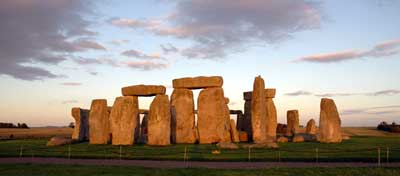Feeding Stonehenge
Description
The great henge complexes of southern Britain have long been recognised as ceremonial sites for large-scale feasting by gatherings of people who probably came from far and wide. Yet we have little indication of the catchment or hinterland of Stonehenge and its close neighbours Woodhenge and Durrington Walls, or of the other 3rd millennium BC Wessex henge complexes where feasting debris is prolific. Were these henges the foci of competing polities within the Wessex chalklands or were they destinations for celebration at specific moments in a calendrical round? Nor do we know much about the rearing and movement of livestock slaughtered at these sites, or the details of the henge builders’ provisioning and consumption. The 2003-2007 excavations at Durrington Walls, by the Stonehenge Riverside Project, have uncovered an unexpectedly well-preserved and artefact-rich Neolithic settlement with surviving house floors and their debris, yard compounds with middens identifiable to particular houses, and distinct zoning between public and private spaces. These present a unique opportunity for a detailed economic study of the Stonehenge people at nested scales from household to henge community.
The Principal Investigator for the Feeding Stonehenge Project is Mike Parker Pearson of the University of Sheffield and the Co-Investigators are Umberto Albarella of the University of Sheffield, Oliver Craig of the University of York and Jane Evans of the British Geological Survey. The project’s Research Associates are Benjamin Chan, Sarah Viner and Mandy Jay of the University of Sheffield and Lisa Shillito of the University of York. The project is funded by the AHRC and is due to run from 2010-2013.
http://www.shef.ac.uk/archaeology/research/feeding-stonehenge.html
Objectives
Researchers at the University of York are involved in 2 aspects of the project:- To study consumption within and between households, and between houses and ceremonial spaces (timber circles and avenue) at Durrington Walls, through integrated analysis of activity patterning from lipid residue analysis on pots, geochemical patterning on house floors, micro-debris distributions, and studies of ceramics, stone tools and carcas processing.
- To establish whether Durrington Walls' pottery was made locally (as a pilot study suggests), and to compare ceramic forms, decoration and contents. Preliminary research suggests that contents (dairy, ruminant and pig fats) varied by vessel size and were differently deposited in public and domestic areas

